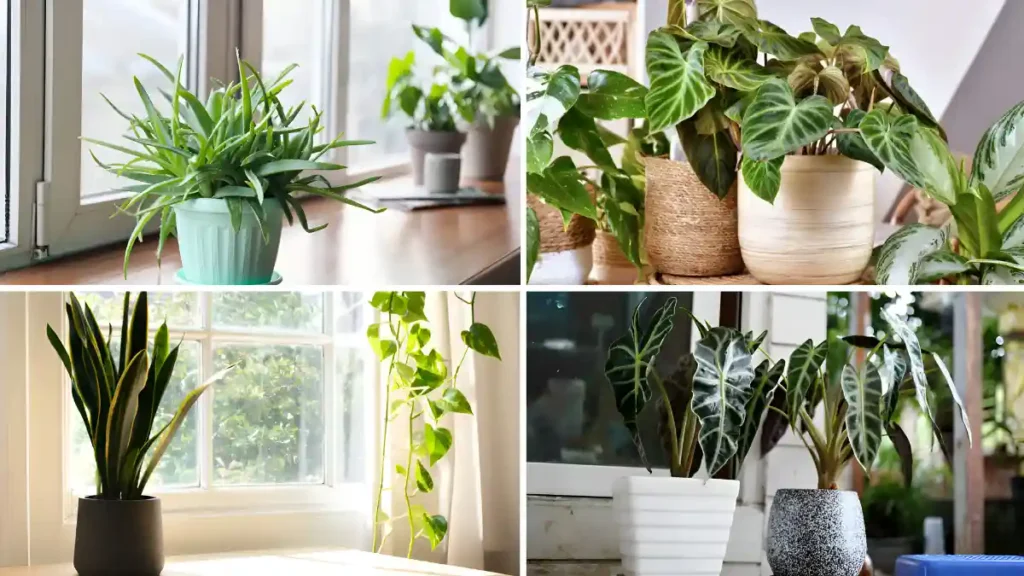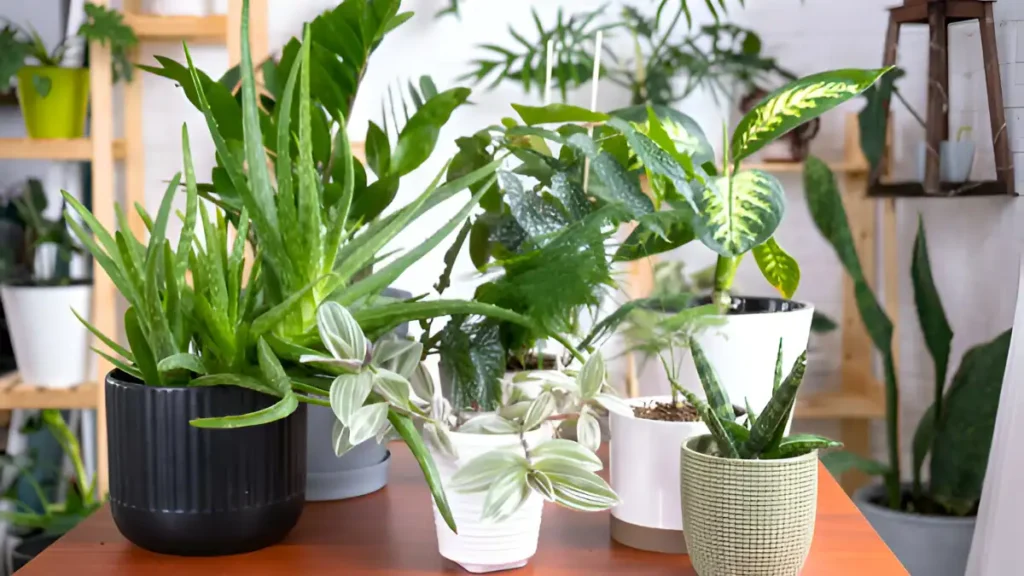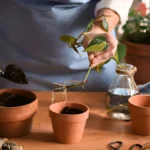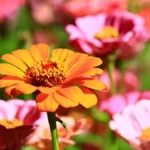Growing indoor plants has become a popular way to improve the air quality and aesthetic appeal of living areas. Bright-light-loving varieties of all indoor plants are especially prized for their colorful growth and eye-catching appearance. This guide offers advice on how to take care of and enjoy some of the best indoor plants for bright light.
Best indoor plants for bright light:
Plants sometimes seem to be best placed indoors in areas with patio doors or windows facing the south or west. Some well-known instances of indoor plants that adore bright light include.
Aloe vera:
Aloe Vera, which has several health benefits, needs lots of sunlight to develop healthily.
- Use a sturdy terracotta pot for your aloe vera planting to support its top-heavy growth and promote airflow.
- Put your plant outside as the weather warms up in the summer to promote flowering, or position it in the bright light of a south-facing window.
- Prefers arid weather, and avoids flooding. Fertilization is usually not necessary for aloe vera.
Philodendron:
Large plants like philodendron trees are indigenous to South America’s tropical states, including Brazil, Bolivia, Argentina, and Paraguay.
- The ideal conditions for the tree philodendron are areas with medium to bright indirect sunshine or dappled shade.
- When the top two inches of the soil become dry, water your philodendron tree. The soil should never be too wet, but it should be continuously moist.
- To promote robust, healthy development, use a balanced fertilizer once a month during the growing season.
Papyrus:
The natural habitat of the papyrus plant is Egypt’s marshy Nile River boundaries. It is a tall, stately shrub that can reach a height of eight feet.
- These plants can withstand some shade, particularly in extremely hot locations but prefer full sun.
- Fertile soil is necessary. In shallow bodies of water, papyrus is a marginal aquatic plant that grows. You will need to water papyrus every day in any area that isn’t continuously damp.
- Papyrus plants often don’t need fertilizer if they are grown in good, fertile soil.

Sansevieria:
This is a well-liked, resilient houseplant with stiff, sword-shaped leaves. It will tolerate low light, temperature changes, and periods of insufficient watering even though it likes bright light.
- The ideal growing conditions for snake plants are eight to ten hours of indirect sunshine or a few hours of early morning sunlight.
- Snake plants thrive in loose, well-drained potting soil mixes when kept inside. Watering the plant just once a month may be sufficient. Give it some water right away if you see that the leaves are dry and fragile.
- Provide a balanced, slow-releasing fertilizer to your snake plant once in the spring and once in the summer. In the winter, avoid fertilizing.
Coral Cactus:
This sculptural, otherworldly-looking plant is the result of grafting two different kinds of succulents together.
- Position the cactus in a spot that receives four hours or more of direct sunlight each day, or in some shade.
- When planting the plant, use cactus and succulent soil or light, well-draining soil. Water your garden frequently if the top two inches of soil appear dry.
- Apply fertilizer every month throughout the summer and spring. Stems growing out from the base should be pruned.
Alocasia:
Large heart- or arrow-shaped leaves that emerge from tuberous rhizomes characterize Alocasia, a popular indoor plant. Their leaves, however, are harmful to humans and animals, so if you have pets or children, avoid them completely.
- Bright indirect light keeps alocasia leaves from scorching, however, the kind and quantity of light required varies according to the species or cultivar.
- Plant in well-draining soil in a slightly acidic container. When the soil is completely damp, water it, but cut back during the winter months when it is dormant.
- These are heavy feeders, especially the larger specimens. Therefore, while the plant is growing, feeding once or twice a month is a sensible approach. When your alocasia is dormant, stop feeding it.
Seasonal care tricks on indoor plants for bright light:
- Take seasonal variations in light into consideration. Remember that during certain seasons, shading from outside trees and window awnings can obstruct the light reaching your interior plants. Try moving your plants to a brighter area of your house if they aren’t doing well, even for a few hours each day.
- Regularly dust the leaves. Dust can accumulate on plants, particularly those with big leaves, which will make it harder for them to absorb light. To keep them dust-free, dust them with soft cloths, feather dusters, or moist microfiber towels.
Conclusion:
Adding indoor plants for bright light to your house or office can dramatically improve the environment. These plants not only provide aesthetic value to the room but also make it healthier and more comfortable. Enjoy the many advantages these lovely green companions have to offer by choosing the right plants and giving them the attention they need.
Certainly! If you’d like to learn more, please consider following our WhatsApp Channel: Harvest Gardening
A frequently asked questions:
Q1. What are the best grow lights for indoor plants?
A1. The three types of grow lights that work best for indoor plants are fluorescent, HID, and LED. Depending on the particular requirements of the plants, each variety has advantages.
Q2. Does direct sunlight damage indoor plants that like direct sunlight?
A2. Indeed, direct sunshine benefits many indoor plants; nevertheless, excessive exposure, particularly through windows, can result in sunburn or leaf scorching.
Q3: What are the benefits of having large indoor plants?
A3: Huge indoor plants can lower stress levels, boost the aesthetic attractiveness of a room, and improve air quality. They can also aid in controlling humidity levels and fostering a cozier, more welcoming environment.
Q4: How often should I water indoor plants for bright light?
A4: Watering schedules vary depending on the type of plant and indoor environment. Bright light generally causes plants to dry out more quickly. When the top inch of soil feels dry, water it. Verify the soil’s moisture content regularly.



